
Denmark is a place I can see myself visiting several times over. The hygge-feeling along with the memories I have of exploring Copenhagen and venturing out to the Viking Village. From the thrill of Tivoli Garden to the excitement at Legoland, Denmark truly has so much to offer in landscape and attractions. Dunes, lagoons, and sandbars shelter Denmark’s west coast from North Sea storms. Denmark is a land of green pastures, blue lakes, and white coastal beaches. The carefully tended farms make up about 3/4 of the country. The roofs of most houses are made of red or blue tiles or thatch. Storks, which the Danes believe bring good lick, build nests on some rooftops. Castles and windmills rise above the land.
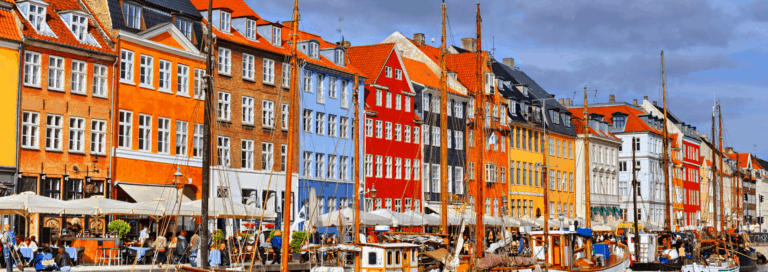

Denmark has one official language: Danish. However, there are several minority languages spoken throughout the territory, if you include The Faeroe Islands and Greenland. Danes are taught English from a very young age and 86% of all Danes speak English as a second language.

Although Denmark is an EU member nation, Denmark’s citizens rejected adopting the euro in a referendum in 2000. Denmark’s currency, the krone, is most often written with the symbol DKK in international money markets, and kr within Denmark. One krone is divided into 100 øre. There are 50 øre, 1kr, 2kr, 5kr, 10kr and 20kr coins. Notes come in denominations of 50, 100, 200, 500 and 1000 kroner.

American Citizens do not need a visa when they travel to Denmark for business or for personal travel. The stay in the Schengen area should not exceed 90 days in a 6 month period.

Denmark is a Go Roam in Europe destination which means you can use your data here at no extra cost. If you have an Add-on with a data allowance of 20GB or greater, a fair use limit applies, with use over 20GB subject to a small surcharge. Traveling is an experience that you always want to document. By using free WiFi, you can capture the best moments of any vacation. Whether you want to post on social media or upload videos of your adventures, countless free hotspots make this easy to do. You will find that free airport WiFi can be found in most places. Few airports are unequipped to provide you with WiFi. So when you land at your destination you can begin chronicling your travels right away.

Hotel and restaurant bills and taxi fares include service charges in the quoted prices. Further tipping is unnecessary, although rounding up the bill is not uncommon when service has been especially good.

ATMs are widely available. Credit cards are accepted in most hotels, restaurants, and shops. Most banks in Denmark have 24-hour ATMs that give cash advances on Visa and MasterCard credit cards as well as Cirrus and Plus bank cards. Typically, you’ll get a good rate when withdrawing money directly from a Danish ATM, but keep in mind that your home bank may charge you a fee for international transactions or for using another bank’s ATM – check before you leave.

You need a power plug adapter in Denmark when living in the United States of America. You also need a voltage converter. Be extra careful with certain appliances because of the difference in frequency. In Denmark, the power plugs and sockets are of type E and K. The standard voltage is 230 V and the standard frequency is 50 Hz.

The best time to visit Denmark is May-Aug when the days are at their longest, temperatures are mild and the countryside is in full bloom. Spring and autumn are best for birdwatching on the west coast, with migrant species passing through.
The best way to get around Denmark is by private car on the excellent road network. In lieu of that, nearly all major towns, and certainly most Danish cities, are serviced by trains, except certain offshore islands, which can be reached only by ferryboat.
Taxis are generally readily available for hire in city centers, near major shopping centers, and at train stations. If you see a taxi with a lit fire sign (or a green light), you can wave it down, or you can phone for a taxi instead – hotels and tourist offices have numbers for local companies.
All large cities and towns have a local and regional bus system. Long-distance buses run a distant second to trains (but are cheaper).
Extensive bike paths link towns throughout the country. Bikes can be hired in every town. Denmark is the most cycle-friendly country in the EU and cyclists are well catered for with excellent cycling routes throughout the country. It’s easy to travel on a bike anywhere in Denmark, even when you’re not riding it, as bicycles can be taken on ferries and trains for a modest fee.
Denmark is perfect for touring by car, which can be hired in larger towns. Drive on the right.
Reasonably priced, with extensive coverage of the country and frequent departures.
Boats link virtually all of Denmark’s populated islands.
Over the past 30 years, traditional Danish food has been re-invented as New Nordic Cuisine. It emphasizes the use of local and seasonal ingredients and is a hit with both local and international foodies. Traditional Danish food is based on what was historically available nearby or could be farmed during Denmark’s short summers. Cabbage and root vegetables like beets were an important part of the diet, along with rye bread, fish, and pork.
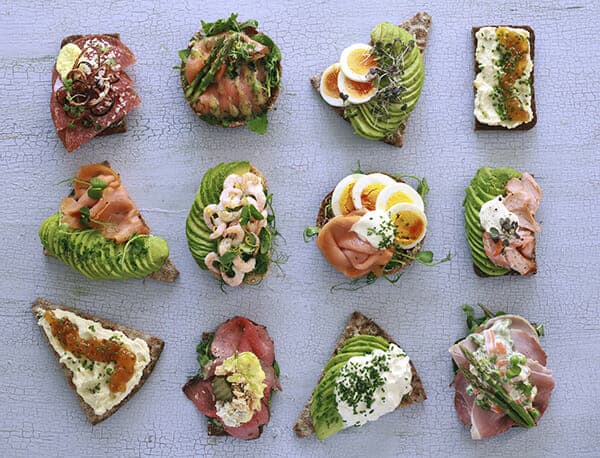
There are many types of accommodations in Denmark – from the very basic to ultra-high class. You can choose from traditional hotels, Danish hostels, or even a personal Home Stay. Probably the least expensive types of accommodations in Denmark are homestays and bed and breakfast. There are 96 hostels throughout Denmark called DanHostel or Vandrerhjem. During the summer months, you may wish to look into renting a summer home. Many Danes have summer homes, which are cottages outside the cities in small communities. They can be anything from a single room to a multiple-room house. If you are the outdoors type or the more adventurous free spirit. there are lots of camping sites and caravan/motor home parks and you can opt to sleep in the open.
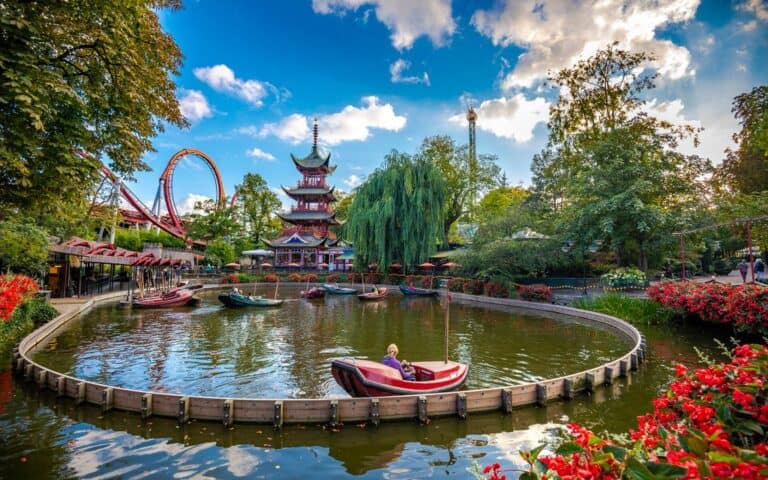
Tivoli, also known as Tivoli Gardens, is an amusement park and pleasure garden in Copenhagen, Denmark. The park opened on 15 August 1843 and is the third-oldest operating amusement park in the world, after Dyrehavsbakken in nearby Klampenborg, also in Denmark, and Wurstelprater in Vienna, Austria.

The Little Mermaid is a bronze statue by Edvard Eriksen, depicting a mermaid becoming human. The sculpture is displayed on a rock by the waterside at the Langelinie promenade in Copenhagen, Denmark. It is 1.25 meters tall and weighs 175 kilograms.

Amalienborg Palace is a must for anyone with a taste for royal history and the life of Denmark’s royal family who still resides inside the palace. Experience royal history at the museum and sense the presence of one of the world’s oldest monarchies from the beautiful palace square where you can watch the changing of the guards.

In 2006, not quite 100 years after Eriksen’s iconic mermaid was introduced, Bjørn Nørgaard, a professor at the Royal Danish Academy of Fine Arts, created “The Genetically Altered Paradise.” A news release described the piece as “a provocative and humorous look at postmodern society.” Located a quarter of a mile from the beloved tourist attraction are contorted, abstract sculptures of Adam, Eve, Mary Magdalene, Christ, a pregnant man, and “The Genetically Modified Little Mermaid.”
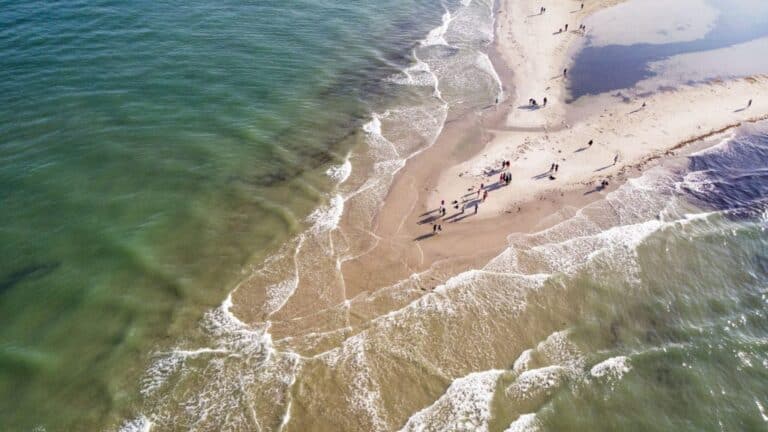
The northernmost point in Denmark is a turbulent sandbar created by two clashing seas. Known as “The Branch” in English, Grenen is a slowly lengthening strip of beach that marks the intersection of two seas which are continually forcing more sand to the surface.
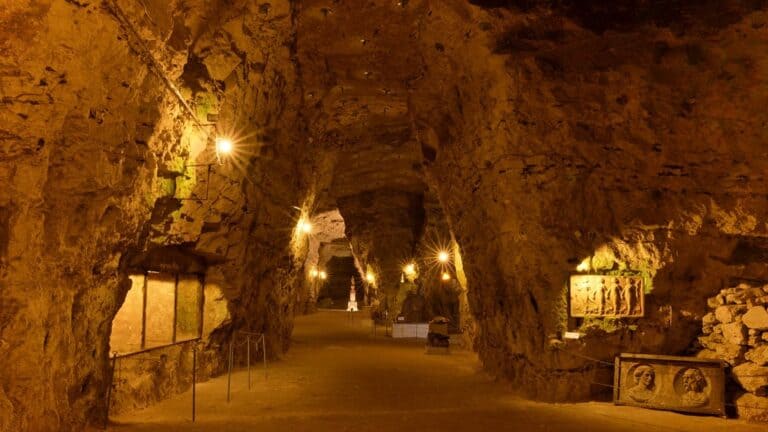
An old limestone mine transformed into a beautiful and unusual sculpture museum. Since 1935, the old THINGBÆK limestone mine has been operating as a museum dedicated to sculpture. This distinctive, unusual exhibition space is beautiful and chilling, lit mostly by candles and kept at a temperature of about 45 degrees Fahrenheit year-round. As such, it’s a surprising and charming stop along an older two-lane highway that’s now usually bypassed by travelers who take the nearby (faster) freeway.
Accommodation:
Hotel or Hostel (single): $33
Double-occupancy room: $65
Food
Meals for one day: $22
Hotdogs: $16
Coffee: $16
Transportation
Taxis, local buses, train: $25
Intercity: $18
Bicycle rental: $70
Entertainment
Entrance tickets & shows: $16
Boat tour: $9.82
Tips & Handouts
Guides & service providers: $6.87
Alcohol
Drinks for one day: $5.24
Water
Bottled water for one day: $6.87
Accommodation
Hotel or rental home (single): $81
Double-occupancy room: $163
Food
Meals for one day: $56
Hotdogs: $16
Coffee: $16
Transportation
Taxis or Car rental: $69
Intercity: $43
Bicycle rental: $70
Entertainment
Entrance tickets & shows: $51
Boat tour: $9.82
Tips & Handouts
Guides & service providers: $6.87
Alcohol
Drinks for one day: $12
Water
Bottled water for one day: $6.87
Accommodation
Resort or hotel (single): $199
Double-occupancy room: $397
Food
Meals for one day: $143
Hotdogs: $16
Coffee: $16
Transportation
Car Rentals or private driver: $207
Intercity: $89
Bicycle rental: $70
Entertainment
Entrance tickets & shows: $192
Boat tour: $9.82
Tips & Handouts
Guides & service providers: $6.87
Alcohol
Drinks for one day: $25
Water
Bottled water for one day: $6.87
When planning for your trip to Denmark, don’t forget about travel insurance! You never know what might happen and it’s better to be safe than sorry.

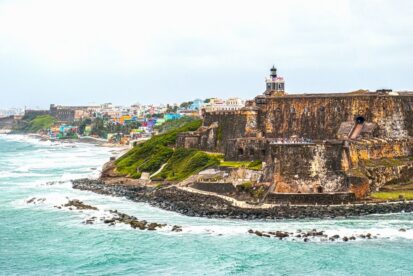


Interested in traveling the world while getting paid? Here at Diversifying Globetrotters LLC, we are partnered with Melanin On The Map and Travel Coach Network to help people across the world find financial, personal, and time freedom. Join the hundreds of others making the change to better themselves while exploring the world and adding money to their pockets.